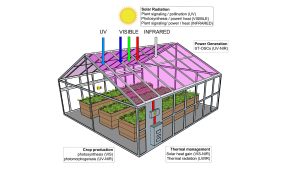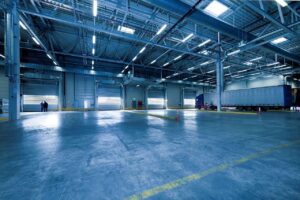Nov. 25, 2022
By Anastazia Csegeny
—
Solar panels are here to stay as a clean, efficient, and advanced source of renewable energy. While we used to think of them as an innovation of the distant future, it is becoming increasingly important to harness the power of the sun in response to fossil fuels and rising temperatures across the globe. Solar panels today are already powering many homes and commercial buildings, but one market largely remains untapped by this eco-conscious approach: farming and agriculture. More specifically, greenhouse operations can be optimized with solar panels, leading to an increase in crop production, reduced carbon emissions, and more efficient thermal management all year round.
The Importance of Solar Energy
There are many reasons to consider renewable energy sources for your business, regardless of your industry. As traditional energy prices continue to rise, solar energy systems have emerged as an all-time, low-cost alternative with no annual price increases. Businesses have turned to solar panels to reduce their operating expenses and reinvest their savings in other equally important ventures. A typical solar array, a collection of multiple solar panels, is capable of lasting 25-30 years, which generates long-term savings and puts your business one step closer to complete energy independence.
Beyond the financial benefits, solar energy is incredibly important for the future of the planet. As a leading expert on sustainable energy solutions, Daisy Energy continues to share information about how solar energy systems reduce greenhouse gas emissions, lower your carbon footprint, and qualify for carbon credits. Companies and organizations that make the transition to renewable energy sources like solar panels also experience appreciation and acknowledgement for being eco-conscious and socially responsible, leading to new partnerships, clients, and projects. When it comes down to it, renewable energy’s benefits span much further than the monetary.
Types of Solar Energy
There are two types of solar energy, and each has a place in greenhouse operations as much as an office building or industrial factory.
1. Passive Solar Energy Systems
These are structures designed to optimize the heat and light directly from the sun, displacing the need for electricity, natural gas, and other active energy forms. Passive solar energy systems are simple and cost-effective, and they do not need external devices to collect or store solar heat. Special windows are typically placed on the south-facing side of the building, capturing the sun’s energy from that optimal angle. It functions like a self-sustaining heating and cooling system, ideal for small homes, buildings, and greenhouses. The downside for passive solar energy is, of course, changes in weather. A rainy or cloudy day can certainly affect the efficiency of the system, and warm climates can even cause overheating.
2. Active Solar Energy Systems
On the other hand, active solar energy systems use traditional looking photovoltaic (PV) solar panels to convert the sun’s energy into more usable forms beyond heating, like water, electricity, and ventilation. Given its name, this system works to more actively capture the sun’s heat through air or liquid, which can then be transferred and stored in a container for later uses. Active solar energy systems do not need a power source other than the sun, but they are more costly than passive systems since external devices (e.g., solar panels) are required. Solar panels are thankfully low maintenance and dependable, so the investment in an active system quickly repays itself.
Using Solar Energy in Greenhouses

Solar energy systems in greenhouses can be either passive or active, or even a combination of both. Regardless of how the systems might be set up, solar energy enables the following versatile uses in greenhouse environments:
- Reliable, excess sources of power and/or battery chargers
- Undersoil ventilation systems that flow warm or cool air under plant beds to cultivate better growth
- Cooling fans to regulate internal temperatures
- Heating and cooling to pump water and maintain comfortable temperatures
Why Greenhouses and Why Now?
The question of why solar energy should be implemented in greenhouses thankfully has a simple answer. Greenhouses are crucial structures for growing plants and crops amidst global warming and extreme weather conditions. As Canadians, we understand the harsh winter months and the toll such weather takes on farmers and the agricultural industry. By growing vegetables, fruit, and other plants in greenhouses despite intense conditions, we can eliminate the need to import products from abroad, which reduces our carbon footprint and prevents harmful gases from entering the atmosphere. The sustainability of the sun’s energy is unparalleled by manmade means, and the choice to use solar energy systems in greenhouses is one that should be taken seriously, especially for the longevity of the planet.
If you think your business might be ready for solar energy systems, in the greenhouse and beyond, contact Daisy Energy for a professional consultation and to learn how this renewable form of energy can benefit your operations.




































